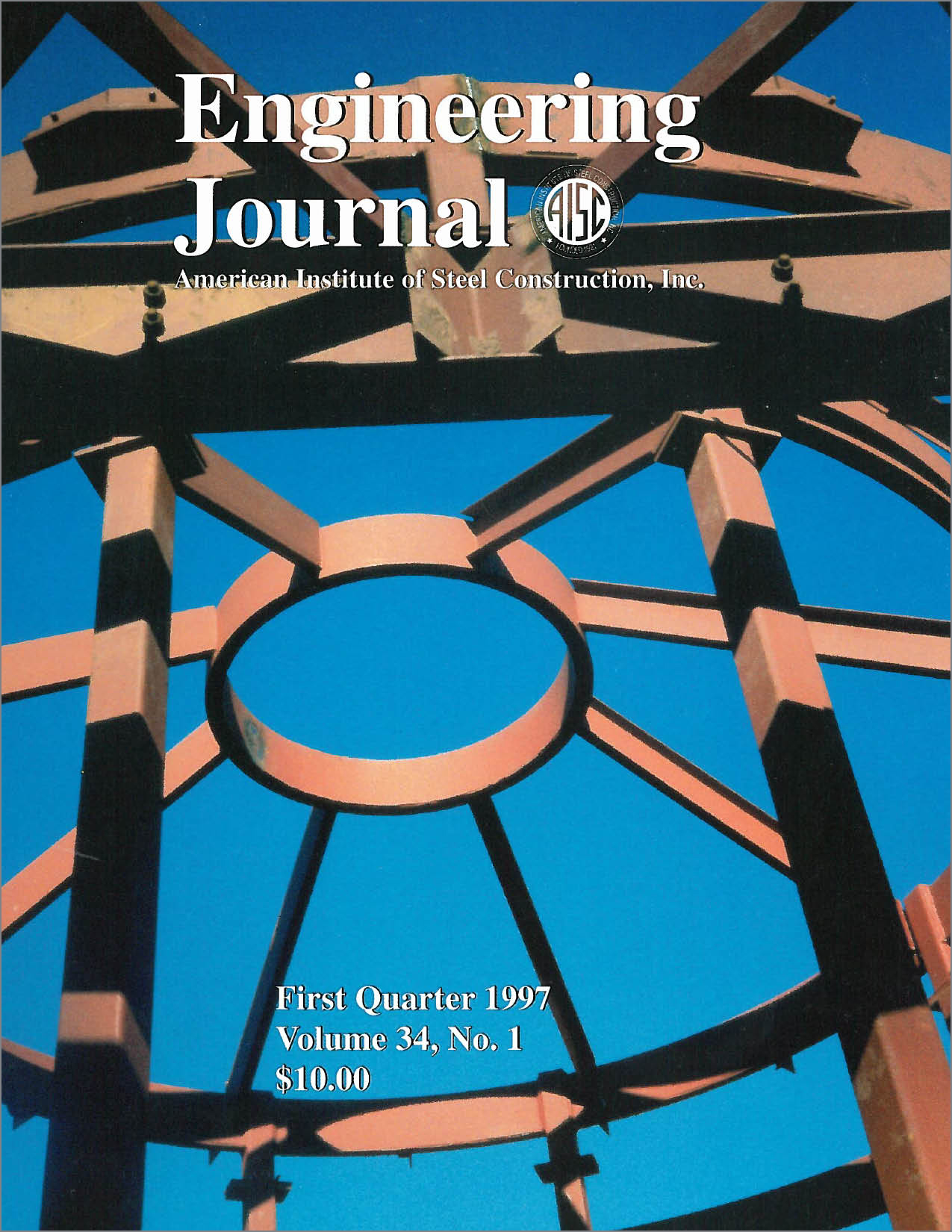Ultimate Strength Considerations for Seismic Design of the Reduced Beam Section (Internal Plastic Hinge)
DOI:
https://doi.org/10.62913/engj.v34i1.677Abstract
Several international (Ref. 1-4) and more recent US (Ref. 5 & 6) research tests have confirmed that the use of a reduced section (often referred to as "dogbone") of a wide flange beam in the proximity of welded beam-to-column moment connections is a very promising means to improve seismic ductility. The notion to protect against seismic overloads through an intentional ductile "fuse" has long existed, but this particular application has recently surfaced as an alternative solution to the post-Northridge concerns about the prescriptive welded connection detail. ARBED, the owner of a 1992 US patent on the reduced beam section (RBS), has graciously waived any commercial royalty rights for its public use. The RBS is accomplished through an engineered gradual transition of the beam flanges to the intended reduced section at a given location. In comparison to the reinforced (strengthened) connections with beam cover plates, ribs, side plates, or haunches, this modification provides the more reliable ductility of "interior" plastic hinge formation in the main beam member but without elevating force demands on the supporting columns and the remaining framing system beyond those of the original member sizes. Likewise, this efficient configuration does not increase the required weld deposition volume, constraint, nor supplementary material requirements. This paper outlines several basic strength principles that could be used in a convenient design of beams with reduced sections to achieve a proper balance between seismic ductility and strength demand. First-order effects of moment continuity, beam span, and beam properties were included in a general systematic procedure.

